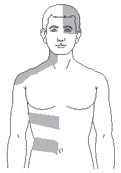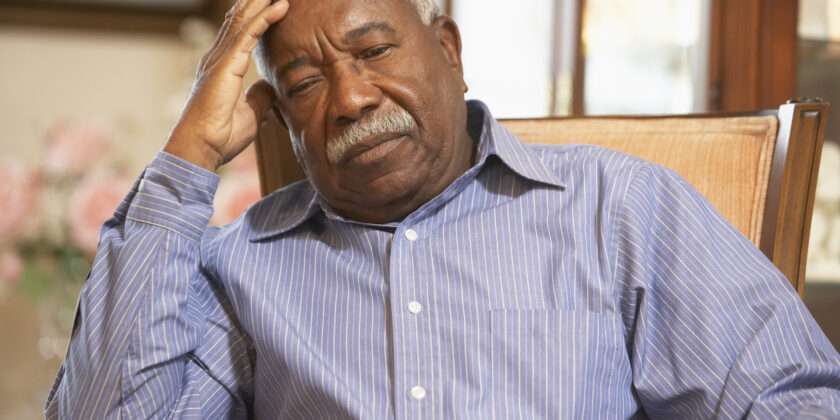A friend of Jay Harold recently asked for information about Shingles. She had visited the Emergency Room at a local hospital because of the intense pain Shingles produced and wanted to know how to stop the pain.
Jay Harold will share with you information from the Centers for Disease Control and Prevention (CDC) and the National Institutes of Health (NIH) about Shingles Disease.
Shingles1 is a painful rash that develops on one side of the face or body. The rash forms blisters that typically scab over in 7 to 10 days and resolve within 2 to 4 weeks.
Almost 1 out of every three people in the United States will develop shingles, also known as zoster or herpes zoster, in their lifetime2 . There are an estimated 1 million cases of shingles each year in this country. Anyone who has recovered from chickenpox3 may develop shingles; even children can get shingles. However, the risk of shingles increases as you get older. About half of all cases occur in men and women 60 years old or older.
Some people have a greater risk of getting shingles. This includes people who
- Have medical conditions that keep their immune systems from working properly, such as certain cancers like leukemia and lymphoma, and human immunodeficiency virus (HIV), and
- receive immunosuppressive drugs, such as steroids and drugs that are given after organ transplantation.
People who develop shingles typically have only one episode in their lifetime. However, a person can have a second or even a third episode.
Causes of Shingles
Shingles are caused by the varicella-zoster virus (VZV), the same virus that causes chickenpox. After a person recovers from chickenpox, the virus stays dormant (inactive) in the body. For reasons that are not entirely known, the virus can reactivate years later, causing shingles. Shingles are not caused by the same virus that causes genital herpes4
Signs & Symptoms
Shingles is a painful rash that develops on one side of the face or body. The rash forms blisters that typically scab over in 7 to 10 days and clears up within 2 to 4 weeks.
Before the rash develops, people often have pain, itching, or tingling in the area where the rash will develop. This may happen anywhere from 1 to 5 days before the rash appears.

Shingles rash on the front of the body.
Most commonly, the rash occurs in a single stripe around either the left or the right side of the body. In other cases, the rash occurs on one side of the face. On rare occasions (usually among people with weakened immune systems), the rash may be more widespread and look similar to a chickenpox rash. Shingles can affect the eye and cause loss of vision.
Other symptoms of shingles can include
- Fever
- Headache
- Chills
- Upset stomach
Transmission of Shingles
Shingles cannot be passed from one person to another. However, the virus that causes shingles, the varicella zoster virus, can be spread from a person with active shingles to someone else who has never had chickenpox. In such cases, the person exposed to the virus might develop chickenpox, but they would not develop shingles.
The virus is spread through direct contact with fluid from the rash blisters caused by shingles.
A person with active shingles can spread the virus when the rash is in the blister-phase. A person is not infectious before the blisters appear. Once the rash has developed crusts, the person is no longer contagious.
Shingles is less contagious than chickenpox, and the risk of a person with shingles spreading the virus is low if the rash is covered.
If you have shingles
- Keep the rash covered.
- Avoid touching or scratching the rash.
- Wash your hands often to prevent the spread of varicella zoster virus.
- Until your rash has developed crusts, avoid contact with
- pregnant women who have never had chickenpox or the chickenpox vaccine;
- premature or low birth weight infants; and
- people with weakened immune systems, such as people receiving immunosuppressive medications or undergoing chemotherapy, organ transplant recipients, and people with human immunodeficiency virus (HIV) infection.
Complications
The most common complication of shingles is a condition called post-herpetic neuralgia5 (PHN). People with PHN have severe pain in the areas where they had the shingles rash, even after the rash clears up.
The pain from PHN may be severe and debilitating, but it usually resolves in a few weeks or months in most patients. Some people can have pain from PHN for many years.
As people get older, they are more likely to develop PHN, and the pain is more likely to be severe. PHN rarely occurs among people under 40 years of age but can occur in up to a third of untreated people who are 60 years of age and older.
Shingles may lead to serious complications involving the eye. Very rarely, shingles can also lead to pneumonia, hearing problems, blindness, brain inflammation (encephalitis) or death.
Prevention
The only way to reduce the risk of developing shingles and the long-term pain from post-herpetic neuralgia (PHN) is to get vaccinated. CDC recommends that people aged 60 years and older get one dose of shingles vaccine. Shingles vaccine is available in pharmacies and doctor’s offices. Talk with your healthcare professional if you have questions about the shingles vaccine.
For more information about preventing shingles, visit the CDC’s Shingles Vaccination page.
Treatment of Shingles
Several antiviral medicines—acyclovir, valacyclovir, and famciclovir—are available to treat shingles. These drugs will help shorten the length and severity of the illness. But to be effective, they must be started as soon as possible after the rash appears. Thus, people who have or think they might have shingles should call their healthcare provider as soon as possible to discuss treatment options.
Analgesics (pain medicine) may help relieve the pain caused by shingles. Wet compresses, calamine lotion, and colloidal oatmeal baths may help relieve some of the itching.
Click this link to get free Health and Wealth information to improve your life. Play the free “Slow Roll Through Civil Rights” Game found on the Jay Harold website. Enjoyed this post? Share it and read more here. Questions? “Ask the Pharmacist a Question!”






